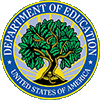 Contact
Us | Change
Text Size | Search
Site
Contact
Us | Change
Text Size | Search
Site Emergency Info Online, Fifth Edition
Next:Pets and Service Animals
Previous: Get a Kit
I. Get a Kit
Promoting Personal Preparedness:
Universal Design and Health Interventions
By Garrett Simonsen, guest contributor
Introduction
Personal and family preparedness are critical elements of any community or organization’s emergency planning. Despite various motivators, such as actual events and public information, individuals and families remain largely unprepared to respond to emergency and disaster situations.
The emergence of public health threats – measles outbreaks, pandemic influenza, anthrax, severe weather – have spurred greater planning participation by public health officials, including promoting preparedness planning at home. In 2006, the Cambridge Public Health Department’s Advanced Practice Center for Emergency Preparedness (APC) developed a comprehensive, community-based approach to promoting personal preparedness planning.
This approach expands access to preparedness information through use of Universal Design principles and utilizes tools, such as a personal preparedness display and survey, for community outreach. The purpose of this article is to explain this approach to promoting personal preparedness, share resources, and consider how this approach might influence future emergency communication practice.
Expanding Access to Preparedness Messages
With lessons learned from Hurricane Katrina, the Cambridge APC sought to overcome barriers to personal preparedness through development of materials incorporating principles of Universal Design. The most often cited barriers to planning are lack of time and know-how, yet for many individuals preparedness planning is complicated by additional factors. A review of numerous preparedness initiatives and tools revealed that making information more accessible was central to overcoming these obstacles. The approach to improved access was two-fold.
First and foremost, by relating preparedness planning across a range of possible emergencies and to personal experiences the topic better resonates with a broader audience. The expectant mother who anticipates her trip to the hospital with a bag of essential items has a sense of what it means to evacuate. The elderly couple who avoids long lines at the grocery store hours before a blizzard understands their specific needs when sheltering at home.
Second, describing preparedness planning concepts with simply-stated messages, illustration of key concepts, predominant language translations, and message delivery through trusted sources enhances understanding of these critical messages.
Build off of knowledge and experience
Most personal preparedness initiatives are geared toward a long list of potential risks and an even longer checklist of suggested supplies. The view that “we live in a dangerous world” is furthered by easy access to news stories of disasters from around the globe – reporting that is often driven by scary images of situations that most are unlikely to experience.
Regardless of the type of emergency or disaster, or the reach of its impact, there are two basic response options: 1) stay-in-place (also known as shelter-in-place); or 2) evacuate. This approach to promoting personal preparedness improves access by simplifying the task of planning and relying on an individual’s existing knowledge and experience. Instead of developing a plan for 10-20 different hazards, individuals can gather the necessary resources and tools for sheltering or evacuating that apply across a range of emergencies. Instead of being overwhelmed by the unfamiliarity with evacuating a neighborhood, an individual can relate to their knowledge and practice of fire drills.
Keep it simple; make it visual
By focusing personal preparedness planning on sheltering and evacuation, the act of becoming prepared seems more manageable and attainable. Further, it focuses preparedness concepts so they can be simply-stated and better illustrated or shown as a pictogram. A simple message can be more easily and quickly translated into other languages. And illustrated concepts serve to better reach those with low-literacy, for whom translation is not available, and with physical or cognitive disability.
Speak through trusted sources
The degree to which preparedness and risk messages are accessible will determine their success and ability to reach a broad audience. Another factor in making these messages accessible – particularly for vulnerable population groups – is knowledge of group communication preferences and styles and an understanding of who are their trusted sources of information.
Service providers are often the most direct link to vulnerable population groups. Through their frequent interactions, providers develop a trust relationship, as well as an understanding for their clients’ communication needs. Working in partnership with service providers, local health officials can promote preparedness among service agency staff and support outreach to their client populations. These client interactions allow for an individualized assessment of their level of preparedness, an intervention, and a follow-up assessment.
Personal Preparedness as a Health Intervention
Public health brings significant experience with community health outreach to this work. The Cambridge APC took the view of personal preparedness planning as a need for behavior change where the outcome sought (improved level of preparedness) is achieved through delivery of an intervention and easy to understand messages and resources.
A personal preparedness display was developed for use in community health fairs and meetings. The pictograms and simply-stated planning steps were used in the display. Examples of sheltering supplies, an evacuation kit, and communication plan templates are included with the display to provide additional visual understanding of preparedness planning.
At community events, participants are asked to complete a brief “preparedness survey”. This survey is used to identify what an individual has already done to prepare at home, but more importantly to focus their attention on tasks to be completed. Those tasks become the focus of the intervention. The simple checklist and the example sheltering and evacuation kits become the tools for delivering that intervention.
The following tools are available to share with any community or organization. For more information about these resources and to obtain files please email Garrett Simonsen at: gsimonsen@challiance.org.
-
Brochure view
Emergency Preparedness Begins at Home is easily adapted for use in any community and can include community specific resources.
- Health Fair Display view This tool, along with sample shelter and evacuation supplies and communication plan templates, can be used at community health fairs and meetings to promote personal preparedness planning.
- Personal Preparedness Survey view This brief survey is used to assess an individual’s level of preparedness, identify areas for improvement, and reassess for behavior change. The survey is also available in Spanish, Haitian Creole, and Portuguese.
- Personal Preparedness Checklist view Used with the Personal Preparedness Survey, this checklist applies to everyone. Each individual and family has unique circumstances that can be built into this basic plan. The checklist is also available in Spanish, Haitian Creole, and Portuguese.
- Personal Preparedness Slide Show This PowerPoint presentation discusses barriers to preparedness and the simple steps necessary to prepare for a range of emergencies. It includes training objectives and suggested talking points.
- Video – coming soon Preparing for an Emergency was developed in partnership with students at Boston University School of Public Health. This 7 minute video outlines simple steps that each of us should take to prepare at home.
- Radio Public Service Announcement listen You Don’t Have to Prepare Alone was developed in partnership with a student at Harvard School of Public Health. It encourages senior citizens and others who may require assistance with planning to use the buddy system and connect with local emergency planners.
Conclusion
Disaster response and recovery are facilitated when members of the public have planned in advance. Providing greater access to preparedness messages supports that advance planning. Further, this process of exploring communication accessibility may serve to improve future emergency and disaster communications.
Using lessons learned through the personal preparedness initiative, the Cambridge APC has applied this approach to other public health preparedness initiatives and risk communications. Below we share two other communication efforts to illustrate how this work continues to take form.
Pictogram-based Signs for Mass Prophylaxis ServicesIn an emergency that requires mass dispensing of medication, service and process information within a clinic or site must be clearly communicated to clients. Ensuring that information is accessible improves efficiency, decreases client anxiety, and expands usability by at-risk populations.
In 2007, the Cambridge Advanced Practice Center for Emergency Preparedness developed a series of pictograms designed to promote universal access to emergency dispensing sites services. The signs were developed in collaboration with local and state public health professionals, and experts in universal design and accessibility. View
Food Recall AlertsIn response to several high profile food recalls a communication tool was developed for use in conducting store inspections and alerting the public. These alerts were distributed through usual media channels, as well as through service providers to reach client populations. The text of the recall notice is simplified, pictograms and photos of the product are incorporated, distinguishing characteristics are highlighted, and translations obtained. Below is a link to the original recall notice and a file of the accessible recall flyer that was developed for community outreach efforts.
FDA Recall Notice http://www.fda.gov/oc/po/firmrecalls/gerber07_07.html
Example of Accessible Recall Alert Example view
About the Writers
Garrett Simonsen is the Regional Exercise and Training Coordinator at the Cambridge Advanced Practice Center for Emergency Preparedness. The Cambridge Public Health Department is home to one of eight Advanced Practice Centers for Emergency Preparedness funded by the National Association of County and City Health Officials (NACCHO) to develop and demonstrate innovative emergency preparedness programs to be shared with other health departments in the country.
John Cavanagh and Anne Malia co-edit Emergency Preparedness Online and 30 Resources, 30 Days.
Article inquiries welcome. On request, we can provide feature-length articles tailored to your audience and requirements. Please contact John Cavanagh at Bridge Multimedia: (212) 213-3740 or jcavanagh@bridgemultimedia.com.

